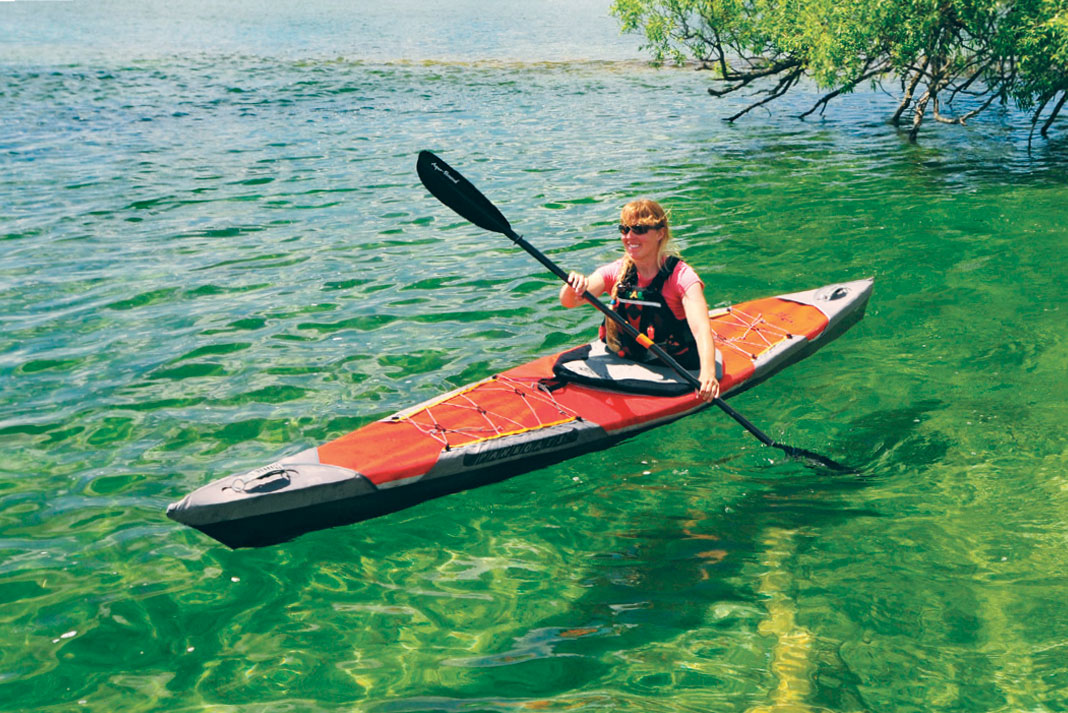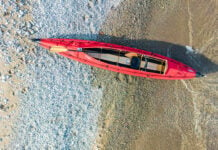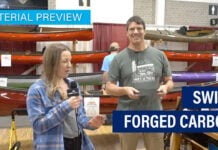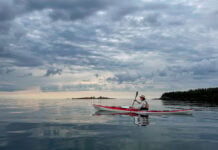Alv Elvestad knows a thing or two about portable boats. The Norwegian-born founder of Pakboats was introduced to folding canoes on the remote rivers of Lappland in the late 70s. After a decade in the distribution business, he started tinkering on his own design and sold the first PakCanoe in 1995. Since then, recreational and touring kayaks have followed as Elvestad and his small, New Hampshire-based team continue to refine Pakboats’ design and construction.
Pakboats Quest 135 Specs
Length: 13′
8″Width: 23″
Material: Polyurethane/aluminum frame
Weight: 29 lbs
Price: $1,515
The Quest series is the next step in that evolution. Elvestad looked at the company’s existing line of XT touring kayaks and realized the somewhat cumbersome frame structure was overkill for a compact solo kayak.
He identified three critical traits for this next generation: shorter, simpler and lighter. Both the Quest 135 and 155—a longer, slightly beamier version for more extended touring—feature Pakboats’ clever hybrid folding/inflatable construction.
The 135 shaves 13 pounds off the lightest XT kayak, and packs into a duffle that’s very manageably sized for tossing in your trunk or checking in as airline baggage.
Assembled, it’s a breeze to solo carry or car-top, and feels as light and nimble on the water as it does off.
Paddling in moderate wind chop, the hull feels stiff and both acceleration and cruising speed are pleasantly quick for a sub-14-foot boat. Even without a rudder or skeg, the Quest tracks well thanks to minimal rocker and low decks that reduce windage.
The Quest’s lightweight deck attaches to the hull with full-length Velcro strips and can be peeled back from either end to access storage areas. Abrasian-resistant end caps with built-in carry handles and wrap-overs with integrated deck bungees fore and aft of the cockpit complete the seal. Although we stayed dry in splashing waves, we did find some water crept in when this seal was immersed; for example, when edging deeply for leaned turns or braces.
Reflecting the same usability versus complexity trade-off that explains why some fixie riders forgo brakes on their bikes, standard outfitting on the Quest doesn’t include foot pegs or thigh braces.
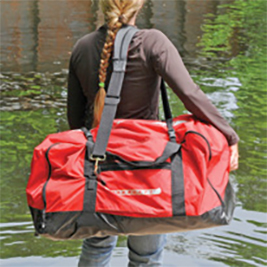
If you want to perform maneuvers that require a large degree of edging, such as rolling, you’ll need to install Pakboats’ optional backpack-style thigh straps.
SmartTrack foot braces are also available, and recommend these to all paddlers to improve efficiency and fit.
Capable, affordable and supremely portable, the Quest 135 shines as a travel kayak for mellow journeys in faraway places.
Ideal for: Short jaunts and weekend trips on sheltered waters; plane, bus and car travel.
Assembly time: 30 minutes
Support report (top)
Pakboat’s sling seat is comfortable and supportive with an inflatable thigh riser, but its high placement on the frame makes the boat feel very unstable.
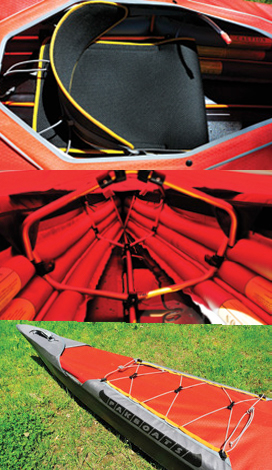
Removing it and putting a Therm-a-Rest inflatable seat directly on the hull transformed our Quest from wild animal to well-behaved pet. Elvestad says he’s aware of the problem and is looking into ways of lowering the seat.
Best of both worlds (middle)
The aluminum frame assembles like a tent: shock-corded poles clip together and slide into sleeves in the heavy-duty polyurethane fabric to form the crisp lines of a multi-chine V hull. Inflatable tubes along the chines enhance stability, tension the skin and allow the baot to float upright when flooded.
That’s a wrap (bottom)
Using Velcro and clever wrap-overs, the Quest’s peel-and-stick deck eliminates the weight and complexity of hatches while providing convenient access.
This article was originally published as “The Quest 135 by Pakboats” in Adventure Kayak‘s Summer/Fall 2013 issue and in the “10 High Performance Portables for Anytime Adventures” spread in Adventure Kayak‘s Summer 2014 issue.Subscribe to Paddling Magazine’s print and digital editions here, or browse the archives here.
“I can go anyway, anyhow, anywhere I choose.” | Photo: Vince Paquot



